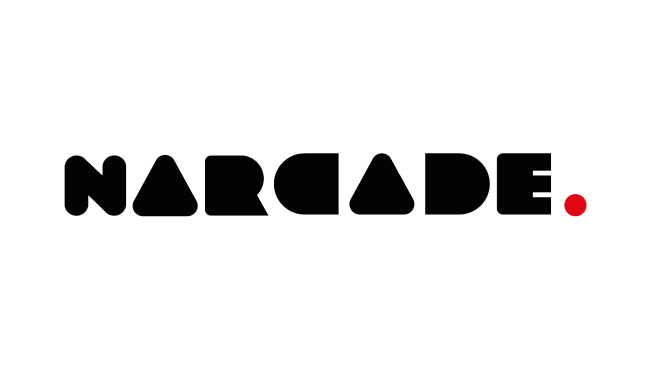SEO audits are different: technical, page-by-page, with analysis of competitors and niches, etc. Many website owners and webmasters use automatic services to get promotion information. Without going into the details of how these services work, many also find that just numbers and offloading data from services are not enough. Even if you conduct initial SEO promotion and implement the basic recommendations, you need to interpret the data from the Webmaster.
For technical problems that complicate search promotion, this interpretation is fairly easy to obtain. But SEO analysis of website promotion isn't just about finding and solving technical problems! By looking at the chart of query impressions, the number of queries in a search, regions, and other indicators, you can tell a lot about what is happening with the website now and what will happen in the near future.
Here is an actual example of an SEO audit (initial SEO report) with an optimization proposal for a large software website with great potential, but very little current search traffic. 9 essential questions for every website owner who is wondering what is really going on with search traffic and whether SEO is worth the investment at this stage.
The brand name isn't mentioned in the article, but the quantitative data are real. The website is quite large (meaning that there are several hundred pages in the search engine index from the services and case study sections alone) and is well known among software developers. The client approached us for help with setting up terms of reference for optimizing just one specific section of the project, and for a long time they were unsure whether it was worth optimizing the others. After a while we tried giving them additional information to help with the decision, and we produced this brief analysis of the Webmaster data.
Questions we recommend asking any website owner when conducting an SEO audit, as well as our report contents:
- How do the queries rank?
- What queries are user-accessible?
- Which queries were clicked through?
- What queries produced pages from the website in the search results?
- What countries were the clickthroughs from?
- Top 10 countries by impressions.
- Top 10 countries by CTR.
- Comparison of these indicators.
- How and why exactly did these queries appear in the search results?
- Which landing pages appeared in the top 10?
- What is the estimated traffic for queries already in the search results?
- What opportunities are there for improving rankings?
Sample SEO audit
Initial audit of search traffic
We start by simply estimating the quantitative data on search traffic to the website over the past three months. The website received a total of 18 clickthroughs from searches - an average of 1 clickthrough every 5 days. At the same time, in Google searches for this period, pages of the website were shown in response to 69 queries.
Now let's answer the main questions that will help us figure out what is happening, why the numbers are what they are, and what we need to focus on in order to improve the situation. All the questions that follow are numbered, and are cited sequentially as conjectures develop or missing data are sought, although this particular order is of course not obligatory for an initial SEO audit.
1. How do the website queries rank?
- Top 10: 2 queries
- Top 20: 3 queries
- Top 30: 5 queries
- Top 40: 2 queries
- Top 50: 5 queries
- Top 60: 2 queries
Result: only 5 queries are accessible to the user, and only 2 of these have the potential to collect up to 50% of traffic. What queries are these?
2. What queries are accessible to the user?
- Brand query (company name) (top 10)
- Website name (top 10)
- Outsourced development services (top 20)
- Agile development (top 20)
- [brand] software logo (top 20)
Only 2 user-accessible queries are categorical transactional queries (items 3 and 4); 2 out of 5 queries are fake (items 2 and 5). Which of these queries produced clickthroughs?
3. Which queries were clicked through?
- Brand query - 17 (average ranking 4.4)
- shopify development companies - 1 (average ranking 56)
The result is that virtually all of the registered search clickthroughs for this period were produced by 1 brand query.
4. What queries produced pages from the website in the search?
Why did only 1 query work? Could other pages simply have not shown up in the search for some reason?
The number of page impressions for a generating query was 21.5%. For other requests:
- [country] software outsourcing - 15.76%
- agile outsourced software development - 3.85%
- agile development services - 3.73%
- software development company eastern europe - 3.73%
- outsource software development services - 2.89%
- agile offshore software development - 2.53%
- software development outsourcing - 2.29%
It is apparent that the [country] software outsourcing query has practically the same impression share as the branded query. Pages were also shown for other queries, despite the current low rankings; nevertheless, none of them produced any clickthroughs.
We can conclude that this is primarily due to irrelevant snippets (website descriptions in search results) and content.
5. What countries were the clickthroughs from?
When analyzing the countries of users coming from search engines, the number of clickthroughs registered is 2.5 times higher than in the statistics for the top-ranking queries (45 instead of 18).
- This is most likely due to the instability of even a small set of top-ranking queries (every month queries will “jump” - old ones fall and disappear, while new ones appear. This is actually Google experimenting with measuring webpage relevance, trying to determine whether users will click on a given page).
Top 10 countries by impressions
| 1. United States |
6. United Kingdom |
| 2. India |
7. Indonesia |
| 3. Belarus |
8. Germany |
| 4. Brazil |
9. Thailand |
| 5. Russia |
10. Vietnam |
Countries in the top 10 for impressions generated 704 impressions (out of 1,224) and 39 clickthroughs (out of 45) - that is, 57% of impressions and 86% of clickthroughs.
Top 10 countries by CTR
| 1. Belarus |
6. Germany |
| 2. India |
7. Estonia |
| 3. Brazil |
8. Latvia |
| 4. Spain |
9. Netherlands |
| 5. United Kingdom |
10. Serbia |
Countries in the top 10 for impressions generated 408 impressions (out of 1,224) and 45 clickthroughs (out of 45) - that is, 33% of impressions and 100% of clickthroughs.
Comparison
| |
Top 10 countries by impressions |
Top 10 countries by CTR |
Average ranking for queries in the column "Top 10 countries by CTR" |
| 1 |
United States - 0 |
Belarus - 31 |
11 |
| 2 |
India - 3 |
India - 3 |
65 |
| 3 |
Belarus - 31 |
Brazil - 2 |
51 |
| 4 |
Brazil - 2 |
Spain - 2 |
57 |
| 5 |
Russia - 0 |
United Kingdom - 2 |
59 |
| 6 |
United Kingdom - 2 |
Germany - 1 |
28 |
| 7 |
Indonesia - 0 |
Estonia - 1 |
47 |
| 8 |
Germany - 1 |
Latvia - 1 |
5 |
| 9 |
Thailand - 0 |
Netherlands - 1 |
61 |
| 10 |
Vietnam - 0 |
Serbia - 1 |
60 |
- An analysis of these Webmaster data shows that clickthroughs did not come from the intended target countries, and that the distribution is random rather than due to any goals being achieved
- At the same time, search traffic was driven primarily by Belarus and Belarusian users.
- Saddest of all, column 2 shows the search CTR by country: for the remaining 91 countries, searches produced page impressions, but no clickthroughs.
6. How and why exactly did these queries appear in the search results?
In analyzing the list of queries that appeared in the search results, the following query groups stand out:
| With the word "outsource" |
23 out of 69 |
| With the word "agile" |
14 out of 69 |
| With the brand name |
13 out of 69 |
| With the words "software development" |
9 out of 69 |
| With the word "Belarus" |
3 out of 69 |
| With words = case study name |
2 out of 69 |
| With other words |
5 out of 69 |
- It is apparent that at least 2 query groups are categorical and transactional. At the same time, all queries from these groups are far from the sphere of user accessibility in the search results and did not produce a single clickthrough. There is simply not enough page relevance for these queries.
- The main generator was a single brand query, although there are 13 such queries in the search!
- There is also a large group of search queries associated with the word "agile" - due to this, various query combinations with this word also “surfaced” in the search, but of them only one real query rendered the website pages relevant.
7. Which landing pages appeared at the top?
For 13 website pages there were impressions in the search results, but 89% of the traffic came to the home page. This suggests that all pages except the home page are absolutely irrelevant and not optimized for the necessary queries. For them, even initial SEO is vital! Unfortunately, the recommendations we prepared six months ago were never implemented.
8. What is the estimated traffic for queries already in the search results?
We actually prepared this report for free as a holiday present for the marketing department. We were curious to see whether our recommendations had been implemented and what had happened to the search traffic in six months. At the same time, we hoped to nudge the potential customer to decide to improve other sections of the site using SEO recommendations in the new season. But after evaluating the first seven points it became clear that no particular changes had yet been made to the website, and that there would be no need to modify the other sections - after all, you have to start by implementing what you have... And so we didn't conduct a more in-depth analysis to answer the eighth question; instead we offered to provide it additionally upon request.
For those who plan to do their own SEO promotion analysis, this issue should of course not be ignored.
9. What opportunities are there for improving rankings?
Like the previous question, we wrote to the client: “We can provide this data upon request." As a free sample of an SEO website audit with real analysis and conclusions, and not just "mechanical" automated data offloading from the Webmaster, we're sure you'll agree that there is plenty of information. All the more so when it comes to making an informed decision and trusting not just your intuition, but also conclusions based on real data.
If you need a professional assessment of website promotion and initial SEO report - not just with initial traffic data and evaluation of current statistics, but also with an in-depth study of data on developing your niche and search demand - the Alconost team will gladly take on the job! Our portfolio includes dozens of SEO case studies on analysis of complex niches and search promotion efforts with various companies in different countries.
Alconost is an internet marketing agency that offers search engine optimization for multilingual websites as well as PPC management, SMM and Content promotion. We conduct full SEO audits and website optimization, improve website usability, develop an international promotion strategy and analyze statistics and many others to increase your profits and improve your positions in search engines.
Services you can be interested in:










